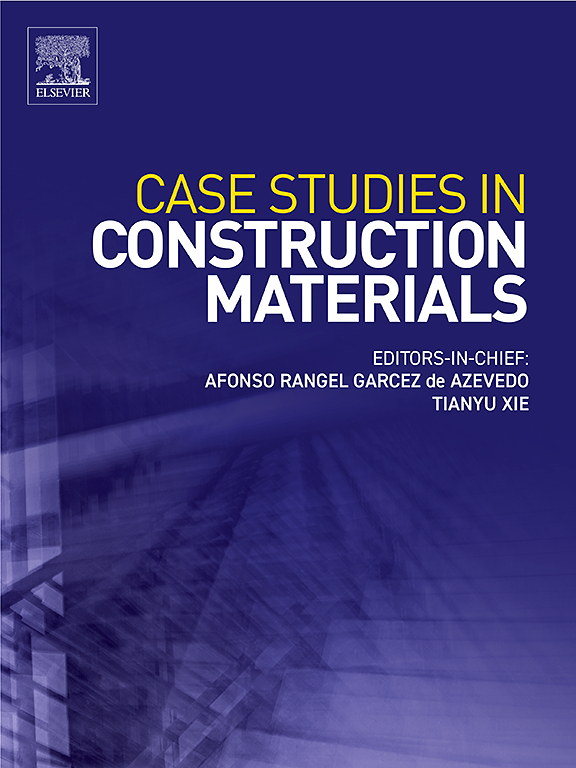Experimental study and prediction of abrasion resistance of hydraulic concrete
IF 6.6
2区 工程技术
Q1 CONSTRUCTION & BUILDING TECHNOLOGY
引用次数: 0
Abstract
To predict the abrasion resistance of hydraulic concrete efficiently and accurately, this study analyzes the physical abrasion process of hydraulic concrete based on the underwater steel ball method. Additionally, building upon the principle of energy conservation, an energy equation relating fracture energy and abrasion strength of hydraulic concrete is established. The predictive fidelity of the energy equation is verified by analyzing the experimental results with different water-binder ratios (0.35, 0.4, and 0.45) and various fly ash contents (0 %, 15 %, and 20 %). The results show that with the increase of water-binder ratio, the abrasion strength of concrete first increases and then decreases. Adding 15 % fly ash can significantly improve the abrasion resistance of concrete, but the abrasion resistance will drop sharply when the dosage increases to 20 %. The fracture energy and abrasion strength of hydraulic concrete satisfy the energy equation regardless of the change of water-binder ratio or fly ash content. Subsequently, a wider range of different concrete mixtures can be used to evaluate the relationship between abrasion strength and fracture energy more scientifically and accurately, which provides theoretical guidance for predicting the abrasion strength of concrete in practical projects.
水工混凝土耐磨性试验研究与预测
为了高效准确地预测水工混凝土的耐磨性,本研究基于水下钢球法对水工混凝土的物理磨损过程进行了分析。此外,根据能量守恒原理,建立了水工混凝土断裂能与耐磨性强度的能量方程。通过分析不同水胶比(0.35、0.4和0.45)和不同粉煤灰掺量(0 %、15 %和20 %)下的试验结果,验证了能量方程预测的保真度。结果表明:随着水胶比的增大,混凝土的耐磨性先增大后减小;掺量为15% %的粉煤灰可显著提高混凝土的耐磨性,但当掺量增加到20% %时,混凝土的耐磨性急剧下降。无论水胶比或粉煤灰掺量如何变化,水工混凝土的断裂能和耐磨性均满足能量方程。从而可以采用更大范围的不同混凝土配合比,更加科学、准确地评价混凝土的耐磨性与断裂能之间的关系,为实际工程中混凝土耐磨性的预测提供理论指导。
本文章由计算机程序翻译,如有差异,请以英文原文为准。
求助全文
约1分钟内获得全文
求助全文
来源期刊

Case Studies in Construction Materials
Multiple-
CiteScore
7.60
自引率
19.40%
发文量
842
审稿时长
63 days
期刊介绍:
Case Studies in Construction Materials provides a forum for the rapid publication of short, structured Case Studies on construction materials. In addition, the journal also publishes related Short Communications, Full length research article and Comprehensive review papers (by invitation).
The journal will provide an essential compendium of case studies for practicing engineers, designers, researchers and other practitioners who are interested in all aspects construction materials. The journal will publish new and novel case studies, but will also provide a forum for the publication of high quality descriptions of classic construction material problems and solutions.
 求助内容:
求助内容: 应助结果提醒方式:
应助结果提醒方式:


